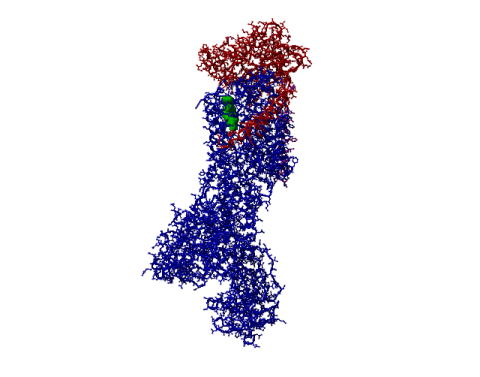Chemical mutagenesis and carcinogenesis
Code: MED-BMS67, study points: 3, period: 1 / W36B (September: Thursday and Friday).


Coordinators:
Dr. J.B Koenderink, Department of Pharmacology and Toxicology, Radboud Institute of Molecular Life Sciences, jan.koenderink@radboudumc.nl
Dr. P.T.J. Scheepers, Department for Health Evidence, Radboud Institute for Health Sciences, paul.scheepers@radboudumc.nl
Code: MED-BMS67, study points: 3, period: 1 / W36B (September: Thursday and Friday).


Coordinators:
Dr. J.B Koenderink, Department of Pharmacology and Toxicology, Radboud Institute of Molecular Life Sciences, jan.koenderink@radboudumc.nl
Dr. P.T.J. Scheepers, Department for Health Evidence, Radboud Institute for Health Sciences, paul.scheepers@radboudumc.nl
Description
Insight into mechanisms of chemical carcinogenesis is important for prevention of cancer. In this course the student will explore several roles that xenobiotic chemicals may play in occurrence of cancer: induction of cancer by chemical compounds, methods that are used to detect tumor-inducing properties of chemicals, animal experiments, working mechanism, of the sequence of events from a mutation to a tumor cell, measurement of internal exposure to cancer causing chemicals and their activated intermediates. In addition, the relationship between research and legislation and regulation with respect to carcinogenic chemicals will be discussed.
Moreover, sufficient evidence exists to suppose that exposure to certain chemicals may lead to hereditary malformations in the progeny. This course will also focus on the origin of cancer and that of hereditary malformations due to exposure to chemicals, as both are based on similar mechanisms involving changes in DNA.
The student acquires knowledge on chemical mutagenesis and carcinogenesis by lectures, literature study and computer aided learning modules. In a practical knowledge on mutagenicity assay will be attained. Finally, a short report of the scientific results of the short-term test practical will be prepared.
Insight into mechanisms of chemical carcinogenesis is important for prevention of cancer. In this course the student will explore several roles that xenobiotic chemicals may play in occurrence of cancer: induction of cancer by chemical compounds, methods that are used to detect tumor-inducing properties of chemicals, animal experiments, working mechanism, of the sequence of events from a mutation to a tumor cell, measurement of internal exposure to cancer causing chemicals and their activated intermediates. In addition, the relationship between research and legislation and regulation with respect to carcinogenic chemicals will be discussed.
Moreover, sufficient evidence exists to suppose that exposure to certain chemicals may lead to hereditary malformations in the progeny. This course will also focus on the origin of cancer and that of hereditary malformations due to exposure to chemicals, as both are based on similar mechanisms involving changes in DNA.
The student acquires knowledge on chemical mutagenesis and carcinogenesis by lectures, literature study and computer aided learning modules. In a practical knowledge on mutagenicity assay will be attained. Finally, a short report of the scientific results of the short-term test practical will be prepared.
Main learning goals
After completion of the course, students are able to
1. Define the mechanism of action of chemical carcinogens, the experimental approaches to identify and quantify metabolites, reactive intermediates and adducts of target molecules.
2. Evaluate methods used for early detection of mutagenic and possible carcinogenic properties of chemicals.
3. Design of animal experiments in the study of carcinogenicity chemicals.
4. Elucidate the function of carcinogenicity assays and their relation to the risk estimation.
5. Explain the role of epidemiology studies of the relationship between exposure and occurrence of cancer.
6. Perform a quantitative risk assessment for mutagenic and carcinogenic compounds.
After completion of the course, students are able to
1. Define the mechanism of action of chemical carcinogens, the experimental approaches to identify and quantify metabolites, reactive intermediates and adducts of target molecules.
2. Evaluate methods used for early detection of mutagenic and possible carcinogenic properties of chemicals.
3. Design of animal experiments in the study of carcinogenicity chemicals.
4. Elucidate the function of carcinogenicity assays and their relation to the risk estimation.
5. Explain the role of epidemiology studies of the relationship between exposure and occurrence of cancer.
6. Perform a quantitative risk assessment for mutagenic and carcinogenic compounds.
